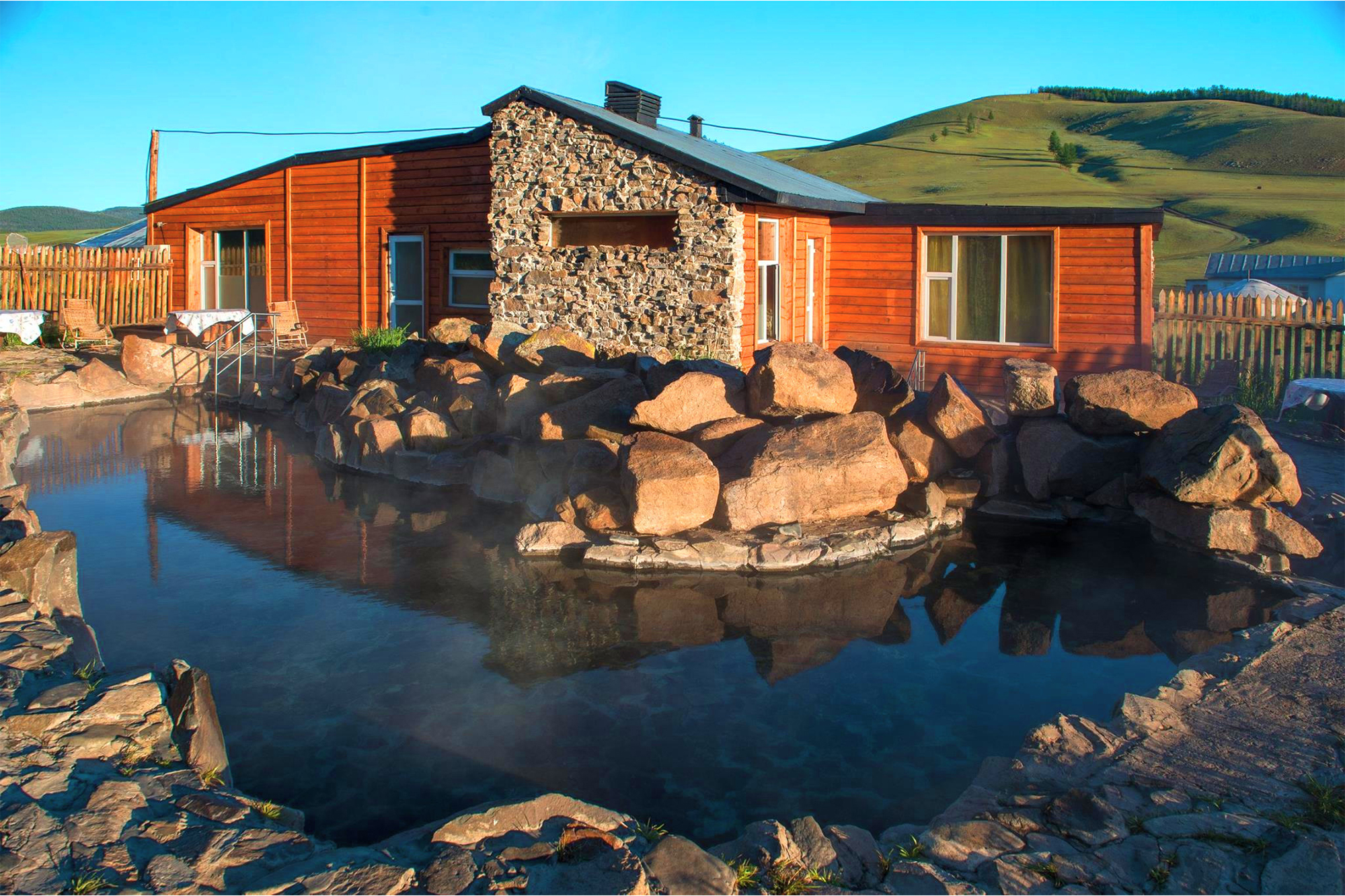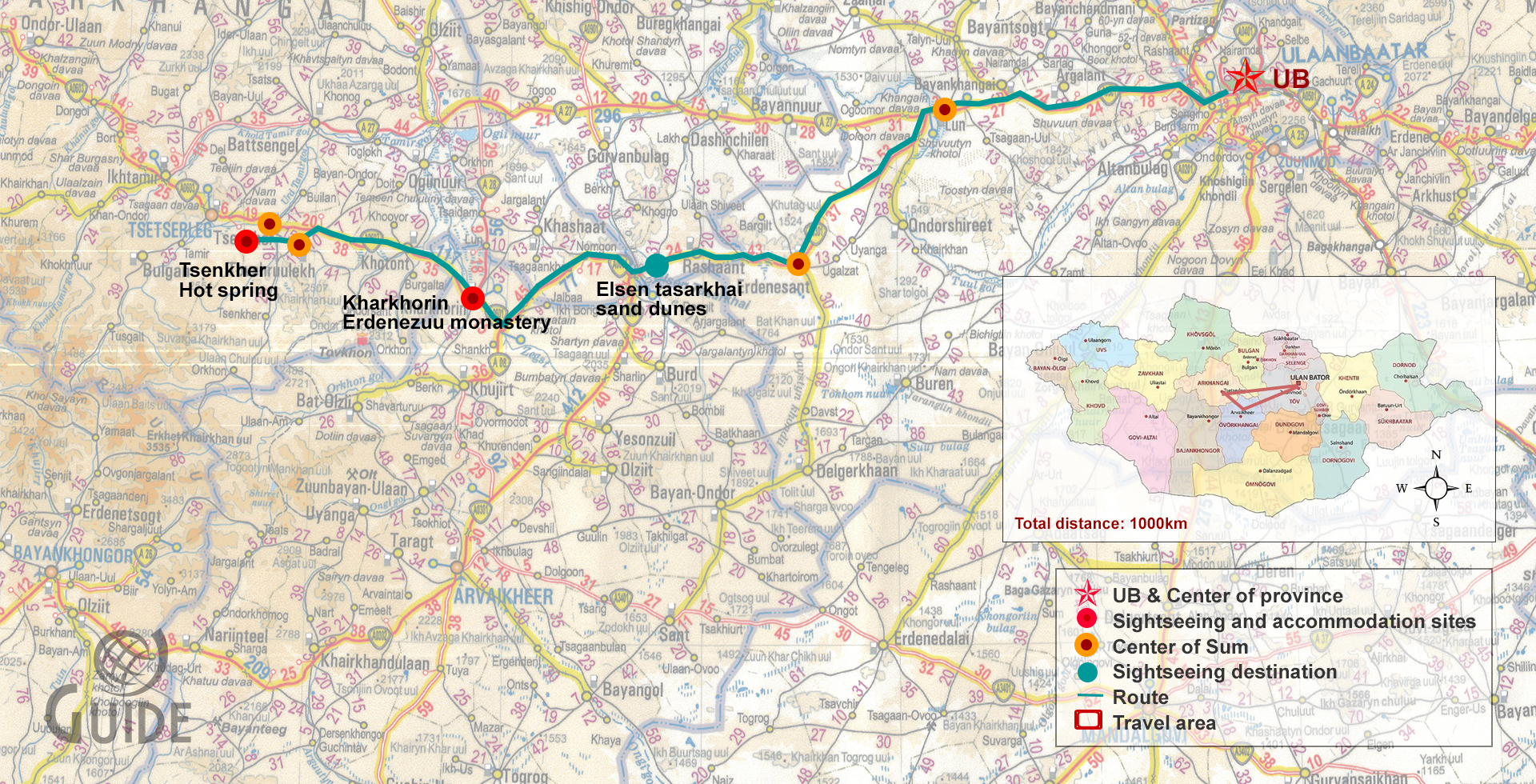Itinerary
DAY 1: Kharkhorin (370 km)
Early morning, we depart to explore the Elsen Tasarkhai sand dunes. It is 80 km long and 5 km wide dunes surrounded by low hills covered with rare bushes and a small forest near a river. We ride a camel, walk on sand dunes, relax in beautifully serene nature and take lunch in a tourist camp near it. Then we head to the Kharkhorin which served as the ancient famous capital of the Mongolian Empire. we visit the Erdene Zuu monastery which was built in 1586. After Ming dynasty troops occupied and later razed the ancient capital Karakorum, the city could not be rebuilt. The Erdene Zuu Monastery was built in 1586 with various construction materials taken from the ruin of Karakorum. Then, we visit the Kharkhorin museum which tells us the story of how the Karakorum flourished as the capital of the Mongol Empire. We see the interesting relics, artifacts, and archeological research of the city of Karakorum.
Meal: Breakfast, Lunch, Dinner
Accommodation: Tourist camp
DAY 2: Tsenkher’s Hot Spring (130 km)
Early morning, we move to Tsenkher’s Hot Spring. Set between forested hills, at an altitude of 1860 meters above sea level, Tsenkher’s hot spring is the second hottest spring in Mongolia and it gushes up to 10 liters per second. Scientists believe that it was formed during the Quaternary period. The hot water temperature is 86 degrees below ground and it comes out from deep earth without blending with soil water as a result of high pressure. It is an alkaline spring containing hydrogen sulfide and silicon compounds.
Meal: Breakfast, Lunch, Dinner
Accommodation: Tourist camp
DAY 3: Tsenkher’s Hot Spring
You will spend a full day enjoying and relaxing in the hot spring. This spring has healing properties for muscle tension, neuritis, muscle stiffness, joint disease, arthritis, and soft tissue injuries, as well as improving digestive function, stopping hemorrhoids, normalizing anemia, improving immunity after treatment, and relieving fatigue. It has a positive effect on repairing skin disorders caused by fatigue, removing scars from wounds, and curing diabetes. The area where the blue hot spring is located belongs to the tributary mountains of the Khangai mountain range, and there are other hot spring deposits such as Bort steppe, Gyalgar, and Tsagaan temple in its vicinity.
Meal: Breakfast, Lunch, Dinner
Accommodation: Tourist camp
DAY 4: Ulaanbaatar (500 km)
Early morning after breakfast, we drive back to Ulaanbaatar. We take lunch on our way back.
Meal: Breakfast, Lunch






